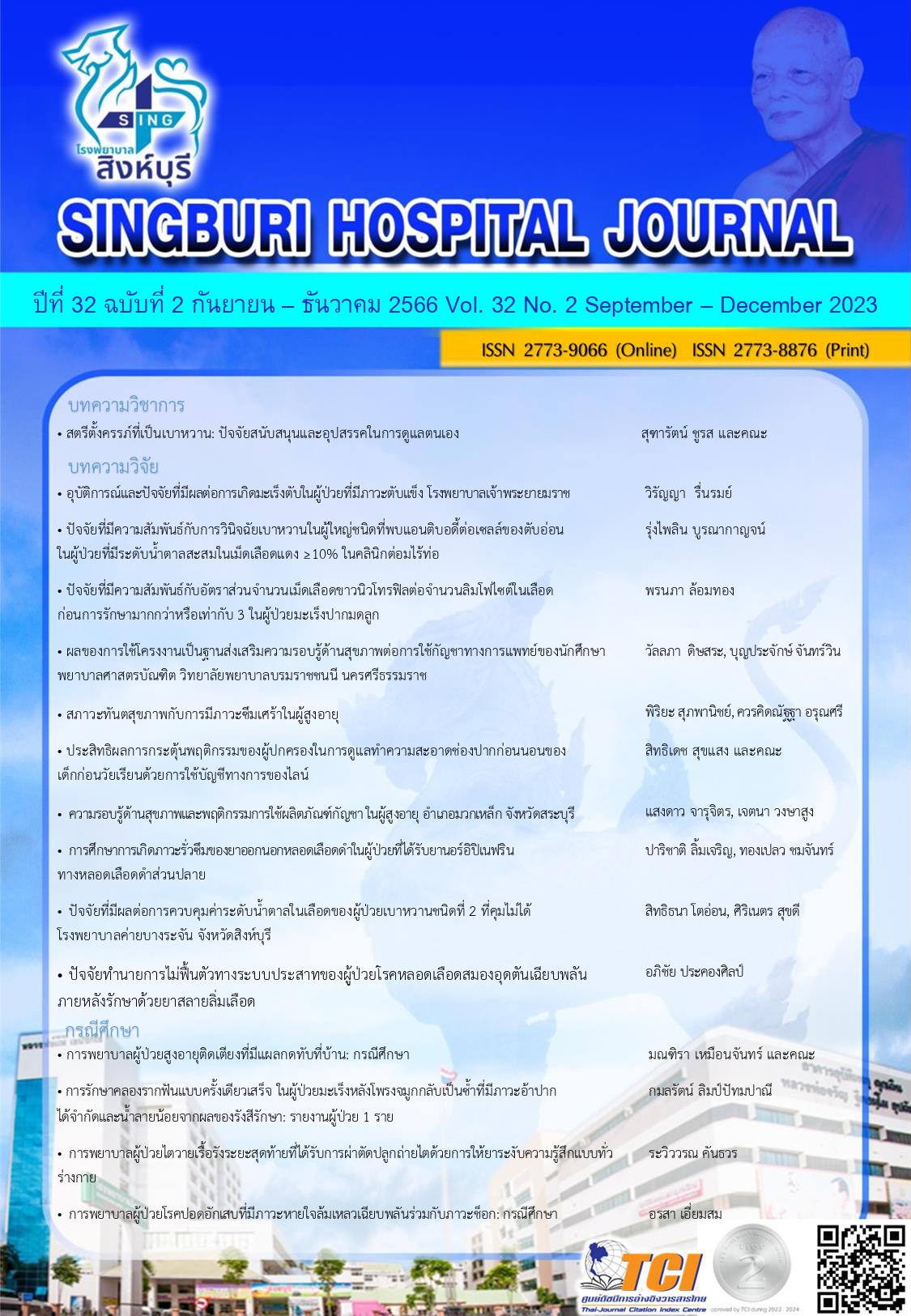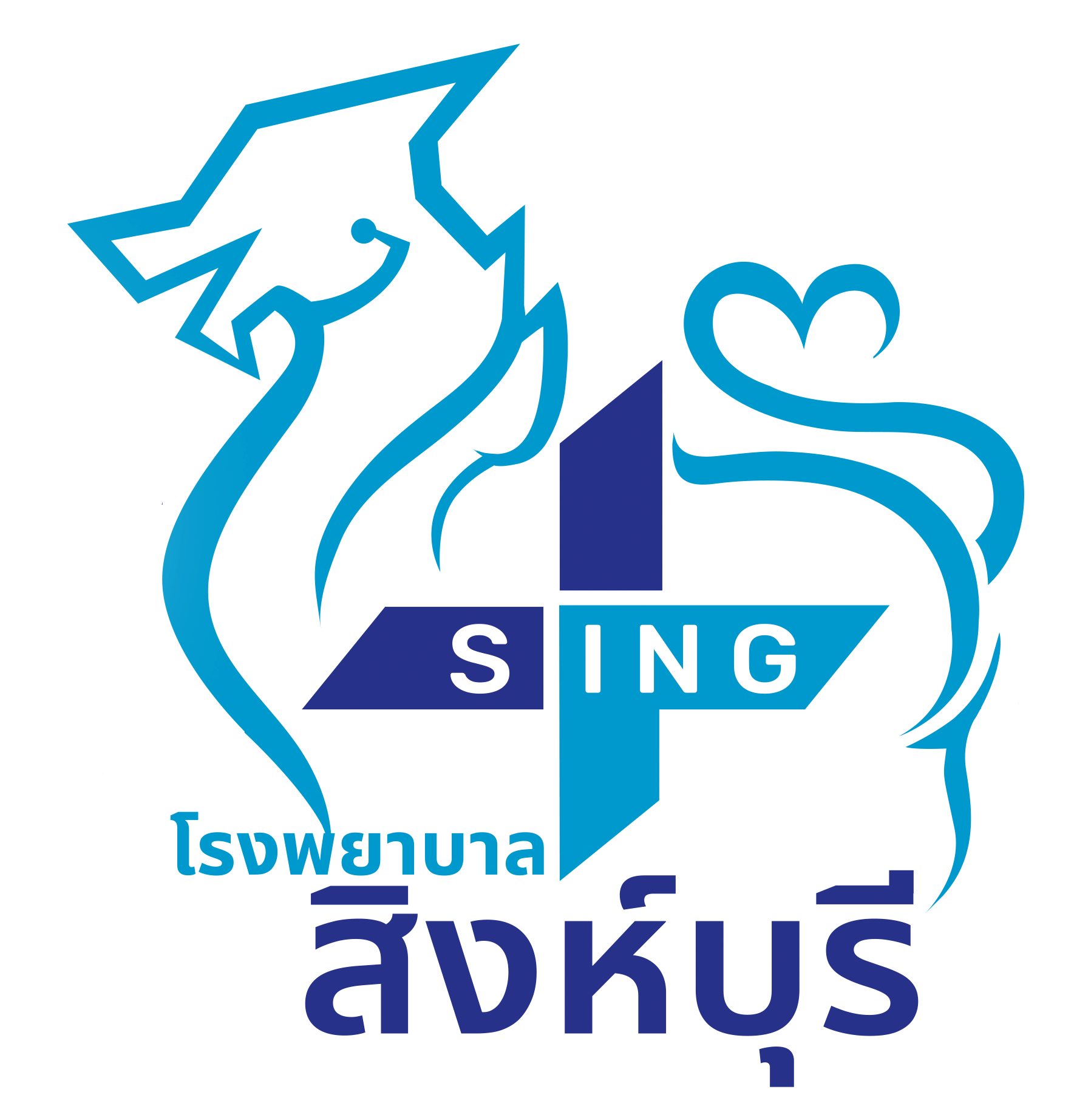การรักษาคลองรากฟันแบบครั้งเดียวเสร็จ ในผู้ป่วยมะเร็งหลังโพรงจมูกกลับเป็นซ้ำ ที่มีภาวะอ้าปากได้จำกัดและน้ำลายน้อยจากผลของรังสีรักษา: รายงานผู้ป่วย 1 ราย
คำสำคัญ:
การรักษาคลองรากฟันแบบครั้งเดียวเสร็จ, มะเร็งหลังโพรงจมูกกลับเป็นซ้ำ, ภาวะอ้าปากจำกัด, ภาวะน้ำลายน้อยบทคัดย่อ
มะเร็งหลังโพรงจมูก (Nasopharynx cancer; NPC) เป็นโรคที่พบได้บ่อยในมะเร็งบริเวณศีรษะและคอ และพบการกลับเป็นซ้ำได้มากและเป็นสาเหตุการเสียชีวิตของผู้ป่วย รังสีรักษาถือเป็นการรักษาหลักในผู้ป่วยประเภทนี้เนื่องจากผู้ป่วยส่วนใหญ่มักตอบสนองดีต่อการฉายรังสี แต่การรักษาด้วยรังสีรักษา และ/หรือร่วมกับยาเคมีบำบัดในบริเวณช่องปากและใบหน้า ย่อมจะมีผลข้างเคียงต่อเนื้อเยื่อ ฟัน และอวัยวะในช่องปากที่เกี่ยวข้องโดยรอบ ทำให้เกิดการเปลี่ยนแปลง ทั้งชั่วคราวหรือถาวรที่ส่งผลกระทบต่อโครงสร้างและการทำงานให้เปลี่ยนแปลงไป ผลข้างเคียงที่เกิดขึ้นได้แก่ อาการปากแห้ง น้ำลายน้อย อ้าปากได้จำกัด และภาวะเยื่อบุช่องปากอักเสบ (mucositis)
รายงานผู้ป่วยฉบับนี้ได้นำเสนอวิธีการรักษาคลองรากฟันแบบครั้งเดียวเสร็จ ในผู้ป่วยมะเร็งหลังโพรงจมูกกลับเป็นซ้ำที่มีภาวะอ้าปากได้จำกัด มีน้ำลายน้อยจากผลของรังสีรักษาในครั้งแรก และมีความจำเป็นต้องกลับเข้ารับรังสีซ้ำ เนื่องจากการกลับมาเป็นใหม่ของโรค ด้วยความจำเป็นเร่งด่วนที่ต้องให้การรักษาอย่างรวดเร็วและมีข้อบ่งชี้ที่สามารถให้การรักษาได้ ทันตแพทย์จึงเลือกให้การรักษาคลองรากฟันแบบครั้งเดียวเสร็จ ซึ่งต้องทำอย่างระมัดระวังเนื่องจากมีข้อจำกัดเรื่องระยะการอ้าปากที่น้อยจนไม่สามารถเปิดทางเข้าสู่โพรงฟันด้วยวิธีปกติได้ จากการติดตามผล พบว่าการรักษาคลองรากฟันประสบผลสำเร็จดี
Downloads
เอกสารอ้างอิง
Curado MP, Edwards B, Shin HR, Storm H, Ferley J, Heanue M. Nasopharyngeal carcinoma. In: Cancer in five continents, vol IX. Geneva: WHO press; 2007.
Khuhaprema T, Srivatanakul P, Attsara A, Sriplung H, Wiangnon H, Sumitsawan Y. Nasopharyngeal carcinoma. In: Cancer in Thailand. Bangkok, Ministry of health; 2010, 16-17.
Vasef MA, Ferlito A and Weiss LM. Nasopharyngeal carcinoma, with emphasis on its relationship to Epstein-Barr virus. Ann Otol Rhinol Laryngol. 1997; 106: 348–56.
Yu WM, Hussain SS. Incidence of nasopharyngeal carcinoma in Chinese immigrants, compared with Chinese in China and Southeast Asia: Review. J Laryngol Otol. 2009; 123(10): 1067-74.
Fachiroh J, Sangrajrang S, Johansson M, Renard H, Gaborieau V, Chabrier A, et al. Tobacco consumption and genetic susceptibility to nasopharyngeal carcinoma (NPC) in Thailand. Cancer Courses Control. 2012; 23: 1995-2002.
Hildesheim A, Wang CP. Genetic predisposition factors and nasopharyngeal carcinoma risk: A review of epidemiological association studies, 2000–2011: Rosetta Stone for NPC: Genetics, viral infection, and other environmental factors. Seminars in Cancer Biology. 2012; 22(2): 107-16.
Lee AWM, Foo W, Law SC, Poon YF, Sze WM, O SK, et al. Nasopharyngeal carcinoma: Presenting symptoms and duration before diagnosis. Hong Kong Med J. 1997; 3: 355-61.
Hui EP, Chan A. Epidemiology, etiology, and diagnosis of nasopharyngeal carcinoma. In: Shah S, ed. UpToDate. Waltham, Mass.: UpToDate, 2021. https://www.uptodate.com. Accessed March 15, 2022.
Lee AW, Sze WM, Au JSK, Leung SF, Leung TW, Chua DT, et al. Treatment results of nasopharyngeal carcinoma in the modern era: the Hong Kong experience. Int J Radiat Oncol Biol Phys. 2011; 61: 1107-16.
Brij Kumar, Nilotpol Kashyap, Alok Avinash, Ramakrishna Chevvuri, Mylavarapu Krishna Sagar, Kumar Shrikant. The composition function and role of saliva in maintaining oral health: A review. Int J Contemp Dent Med Rev. 2017;2017: 1-6.
Garg AK, Malo M. Manifestations and treatment of xerostomia and associated oral effects secondary to head and neck radiation therapy. J Am Dent Assoc 1997; 128: 1128-33.
Andrews N, Griffiths C. Dental complications of head and neck radiotherapy: Part 2. Aust Dent J. 2001;46(3): 174-82.
Managing trismus after treatment for Head and Neck Cancer [Internet]. New York: Memorial Sloan Kettering Cancer Center; 2023 [updated 2023 June 13; cited 2023 June 20]. Available from: http://www.mskcc.org /cancer-care/patient-education/trismus.
Dijkstra PU, Huisman PM and Roodenburg JLN. Criteria for trismus in head and neck oncology. Int J Oral Maxillofac Surg. 2006; 35(4): 337-42.
Bensadoun, RJ., Riesenbeck, D., Lockhart, P.B. et al. A systematic review of trismus induced by cancer therapies in head and neck cancer patients. Support Care Cancer. 2010; 18: 1033–38.
Vincent Wc Wu, Michael Tc Ying, and Dora Lw Kwong. A study on the post-radiotherapy changes of temporomandibular joint in nasopharyngeal carcinoma patients. Br J Radiol 2017 Dec; 90(1080) :20170375.
Paul N, Johnson J, Finizia C and Andrell P. The incidence of trismus and long-term impact on health-related quality of life in patients with head and neck cancer. Acta Oncol. 2013; 52(6): 1137-45.
Sharon Shuxian Poh, Yoke Lim Soong, Kiattisa Sommat, Chwee Ming Lim, Kam Weng Fong, Terence Wk Tan, et al. A study on the post-radiotherapy changes of temporomandibular joint in nasopharyngeal carcinoma patients Br J Radiol 2017 Dec; 90(1080): 20170375.
Xu T, Tang J, Gu M, Liu L, Wei W, Yang H. Recurrent Nasopharyngeal Carcinoma: A Clinical Dilemma and Challenge. Curr Oncol. 2013; 20(5): 406-19.
ศุภผล เอี่ยมเมธาวี. รังสีรักษาบริเวณศีรษะและคอผลแทรกซ้อนและการจัดการ เอกสารประกอบการบรรยาย การประชุมวิชาการของสถาบันมะเร็งอุบลราชธานี, 15 มีนาคม พ.ศ. 2545 : ณ สถาบันมะเร็งอุบลราชธานี : 2545
Cohen S, Hargreves KM. Pathways of pulp. Chapter 4: case selection and treatment planning. 9th edition. 2006; 94-95.
Ben-David A, Diamante M, Radawski J., Vineberg K, Stroup C, Murdoch-Kinch C., Eisbruch A Lack of Osteoradionecrosis of the Mandible after IMRT for Head and Neck Cancer: Likely Contributions of both Dental Care and Improved Dose Distribution. Int. J. Radiat. Oncol. Biol. Phys. 2007; 68: 392-402.
Hancock PJ, Epstein JB, Sadler GR. Oral and dental management related to radiation therapy for head and neck cancer. J Can Dent Assoc. 2003; 69(9): 585-90.
Montgomery S. Endodontic complications in an irradiated patient. J Endod. 1977; 3(7): 277-9.
Ahmad IA. Rubber dam usage for endodontic treatment: A review. Int Endod J. 2009; 42(11): 963-72.
Dodge JS. Immediate root filling. The Dental Cosmos. 1887; 29(4): 234-5.
Ferranti P. Treatment of the root canal of an infected tooth in one appointment: a report of 340 cases. Dent Dig. 1959; 65: 490-4.
Pekruhn RB. Single-visit endodontic therapy: A preliminary clinical study. J Am Dent Assoc. 1981; 103(6): 875-77.
Ahmed F, Thosar N, Baliga MS and Rathi N. Single Visit Endodontic Therapy: A Review. Austin J Dent. 2016; 3(2): 1035.
DiRenzo A, Gresla T, Johnson BR, Rogers M, Tucker D and BeGole EA. Postoperative pain after 1- and 2-visit root canal therapy. Oral Surg Oral Med Oral Pathol. 2002; 93(5): 605-10.
Trope M, Delano EO, Orstavik D. Endodontic treatment of teeth with apical periodontitis: single vs multivisit treatment. J Endod. 1999; 25(5): 345-50.
Schwendicke F, Göstemeyer G. Single-visit or multiple-visit root canal treatment: systematic review, meta-analysis and trial sequential analysis. BMJ. 2017; 7(2): e013115.
Moreira MS, Anuar ASN, Tedesco TK, Dos Santos M, Morimoto S. Endodontic Treatment in Single and Multiple Visits: An Overview of Systematic Reviews. J Endod. 2017; 43(6): 864-70.
Patel S, Rhodes J. A practical guide to endodontic access cavity preparation in molar teeth. Br Dent J. 2007; 203(3): 133-40.
LaTurno SA, Zillich RM. Straight-line endodontic access to anterior teeth. Oral Surg Oral Med Oral Pathol. 1985; 59(4): 418–9.
Madjar D, Kusner W, Shifman A. The labial endodontic access: a rational treatment approach in anterior teeth. J Prosthet Dent. 1989; 61(3): 317-20.
Logani A, Singh A, Singla M, Shah N. Labial access opening in mandibular anterior teeth-An alternative approach to success. Quintessence International. 2009; 40(7): 597-602.
Clements RE, Gilboe DB. Labial endodontic access opening for mandibular incisors: endodontic and restorative considerations. J Can Dent Assoc. 1991; 57(7): 587-9.
ดาวน์โหลด
เผยแพร่แล้ว
รูปแบบการอ้างอิง
ฉบับ
ประเภทบทความ
สัญญาอนุญาต
ลิขสิทธิ์ (c) 2023 โรงพยาบาลสิงห์บุรี

อนุญาตภายใต้เงื่อนไข Creative Commons Attribution-NonCommercial-NoDerivatives 4.0 International License.
บทความที่ได้รับการตีพิมพ์เป็นลิขสิทธิ์ของโรงพยาบาลสิงห์บุรี
ข้อความที่ปรากฏในบทความแต่ละเรื่องในวารสารวิชาการเล่มนี้เป็นความคิดเห็นส่วนตัวของผู้เขียนแต่ละท่านไม่เกี่ยวข้องกับโรงพยาบาลสิงห์บุรี และบุคคลากรท่านอื่นๆในโรงพยาบาลฯ แต่อย่างใด ความรับผิดชอบองค์ประกอบทั้งหมดของบทความแต่ละเรื่องเป็นของผู้เขียนแต่ละท่าน หากมีความผิดพลาดใดๆ ผู้เขียนแต่ละท่านจะรับผิดชอบบทความของตนเองแต่ผู้เดียว







